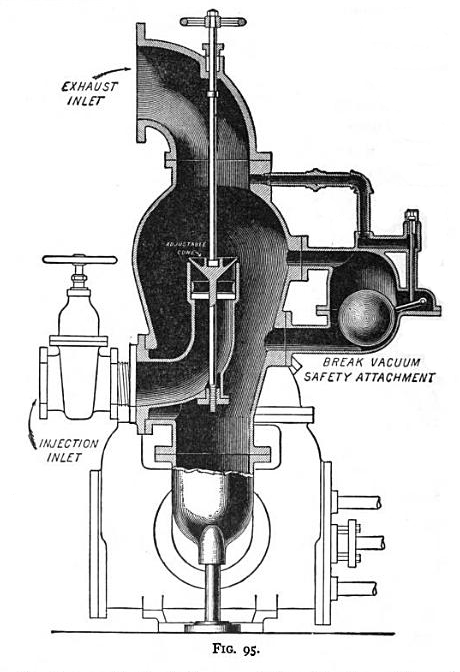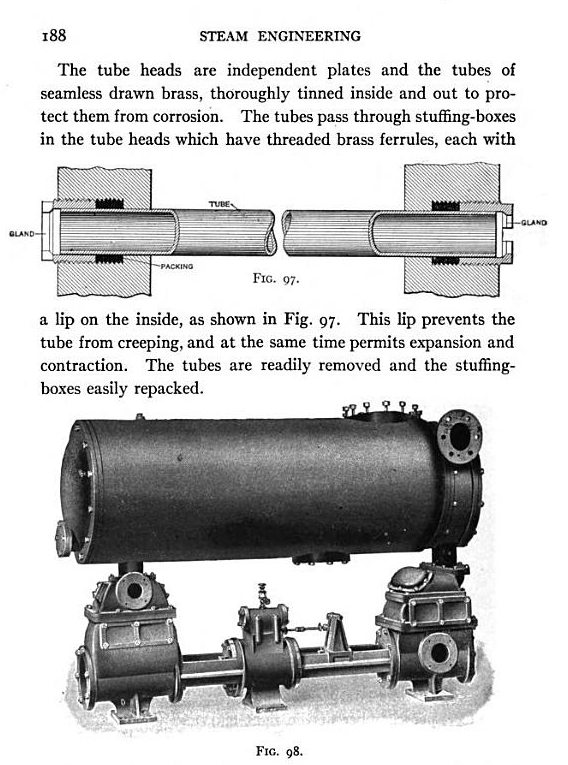Steam Engine Research/Condenser
Main > Energy > Steam Engine
From Steam Engineering: A Text Book by William R. King
Section 115, pg. 183.
Their are specific economical advantage in operating a steam engine in connection with a condenser. Local conditions as to the supply of condesning water, or as to the extend of the plant, are usually the determining influences governing the employment of condensers. A savings of 25 per cent in steam consumption can be realized.
The condenser may be of the jet or surface type. In the jet condenser the exhaust steam from the engine enters the condensing chamber where it is brought in contact with a jet of cold water, resulting in the condensation of the steam and the production of a vacuum. The mixture of the water from the condensed steam and the condensing water falls to the bottom of the condenser and must be pumped out regularly by the air pump; otherwise the air contained in the condensing water would accumulate and destroy the vacuum.
It will be seen that with the jet condenser, the feed water is a mixture of the condensing water and he water resulting from the condensation of the steam, about 25 pounds of the former to 1 pound of the later, so that in case the condensing water contains salts, acids, and scale-producing impurities, the feed water resulting from the mixture is capable of doing great injury to the boiler.
With the surface condenser the exhaust steam on entrance into the condenser comes in contact with the cold metallic surfaces of tubes through which the condensing water is being forced by a circulating pump. In this process the steam is at once condensed and a vacuum formed. The water resulting from condensation of the steam falls to the bottom of the condenser, whence it is drawn, together with any air or uncondensed vapor that may be present, by the air pump.
With the surface condenser there is no mixture of the condensed steam and the condensing water, and therefore a purity of feed water is produced that prevents the accumulation of dirt in the boiler and the formation of scale on the heating surface.
The choice of the condenser is governed by the local conditions. If the condensing water is suitable for feed water and its supply plentiful, the jet condenser is preferred, owing to its simplicity, small bulk and cost. It requires only one pump. With the surface condenser, the waters do not mix, which means that the air pump maintains a better vacuum and has less work to do than the jet condenser. The surface condenser is more bulky and expensive of the two.

